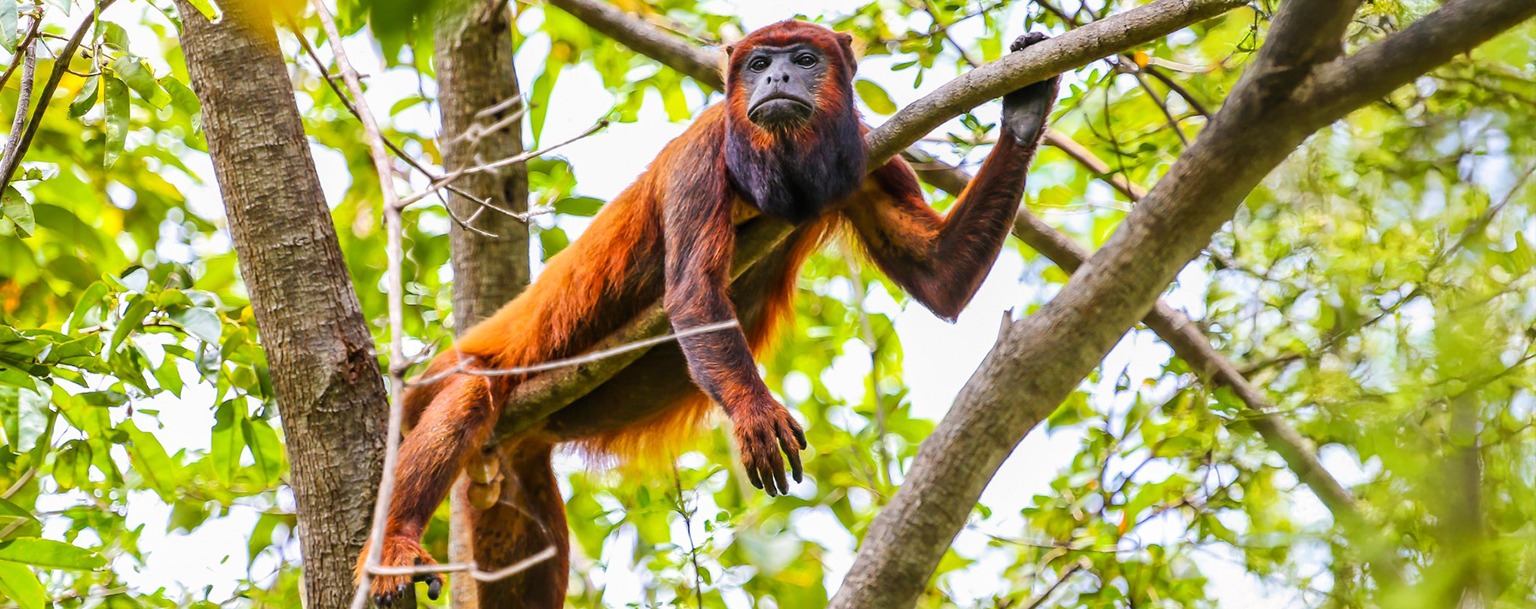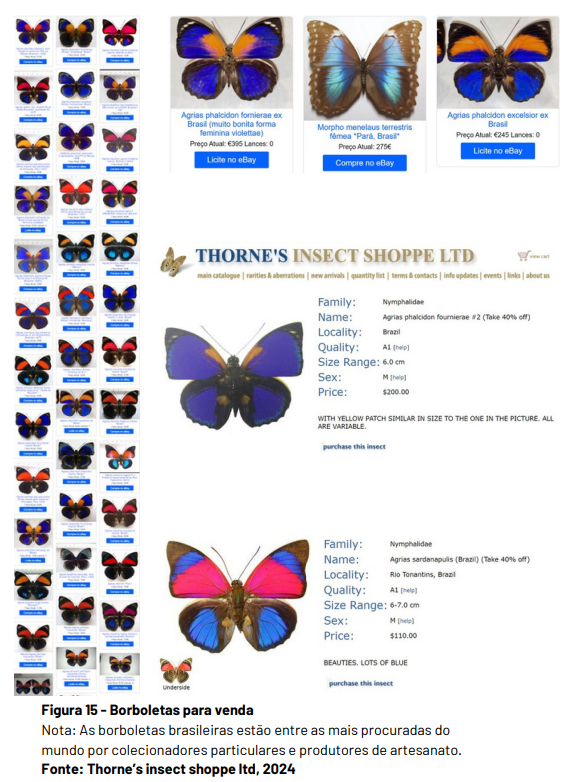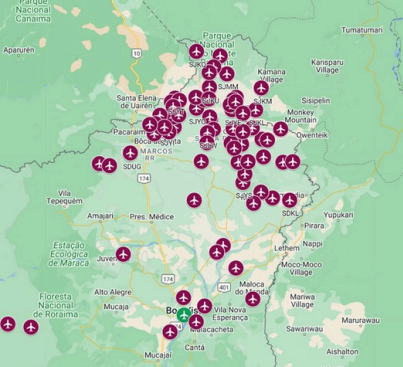Two brazilian states concentrate 11 cities with a rise in animal trafficking
22 de January de 2025

By Ana Cláudia Leocádio – From Cenarium
BRASÍLIA (DF) – The states of Amazonas and Pará account for over half of the 20 municipalities with the highest rates of wildlife trafficking in the Brazilian Amazon. According to a report published by the National Network to Combat Wildlife Trafficking (Renctas) last Friday, the 17th, six municipalities in Amazonas and five in Pará are implicated.
According to the organization, wildlife trafficking is defined as the illegal removal of a fauna specimen from its habitat, regardless of its intended purpose. “Although the term ‘wildlife trafficking’ is not explicitly mentioned in Brazilian legislation, all actions characterizing this criminal act are covered under Law No. 9,605/98,” Renctas explains.
Among the most sought-after animals by wildlife trafficking networks in the Amazon are turtles, songbirds (like curiós), howler monkeys, pirarucu fish, beetles, Amazonian frogs, and arachnids. (See the complete list at the bottom.)

The state of Amazonas features six municipalities in the ranking with the highest occurrences of wildlife capture: Barcelos, Santa Isabel do Rio Negro, Manaus, Lábrea, Itacoatiara, and Presidente Figueiredo. In Pará, the highlighted cities are Altamira, Medicilândia, Ilha do Marajó, Almeirim, and Santarém.
The report also identifies three municipalities in Tocantins along the trafficking route, including Gurupi, Alvorada, and Araguaína. In Roraima, Boa Vista and Caracaraí are hotspots for wildlife capture. Other cities mentioned include Cruzeiro do Sul (AC), Porto Velho (RO), and Colniza (MT).
The Non-Governmental Organization (NGO) has monitored averages since 2001 and estimates that approximately 38 million animals are illegally removed from Brazil each year. Only one in ten animals survives to reach the final consumer, with the other nine dying during capture or transport.
The Legal Amazon comprises nine states—Acre, Amapá, Amazonas, Pará, Rondônia, Roraima, Tocantins, Mato Grosso, and Maranhão—home to roughly 30 million inhabitants.
Most Captured Animals Used as Protein Source in the Amazon
Renctas states that most animals captured in the Amazon region are used for subsistence hunting or culinary delicacies. “Studies indicate that over 23 million animals are hunted annually as a protein source in the Amazon, amounting to about 90,000 tons of wild meat,” the report clarifies.
Second in prominence is the trafficking of wild animals for use as pets, involving an extremely diverse range of species. “Trafficking for companionship also includes the subcategory of collecting as a hobby, such as aquariums,” Renctas notes.
Other uses include cultural practices that utilize native species as raw materials for crafting decorative objects (paintings, handicrafts, etc.), ritualistic purposes (headdresses, religious offerings), or medicinal applications. In Brazil, 326 wildlife species have been documented for use in folk medicine, 75 of which are on endangered species lists.
Wildlife is also trafficked for biopiracy (unauthorized scientific research), private collectors, and the art and fashion tourism industries. According to Renctas, “Active compounds in thousands of wild species could provide solutions to numerous human ailments, generating billions of dollars annually in royalties.”
Private collector trafficking is considered the most environmentally harmful, as it targets endangered species. The rarer a species, the higher its value in the illegal market, making it increasingly sought after.
The report also cites luxury brands that disregard environmental concerns and continue using parts of wild animals in their products, including Hermès, Gucci, Saint Laurent, and Alexander McQueen.
“The tourism sector also fuels the illegal wildlife trade by using animals to profit from charging for photos, filming, or even personal interaction with them, a practice that is very common in the Amazon biome. Equally impactful is the use of wildlife in decorative objects or so-called ‘works of art,’ such as those by artist Damien Hirst, who sells his butterfly paintings for millions of pounds,” highlights Renctas.

Plumage Art Raises Concerns
The organization also expresses concern over indigenous plumage art, which has attracted foreign interest since European colonization.
“Currently, there is an active illegal market for plumage art produced by Brazilian indigenous communities. This activity directly leads to the capture and death of thousands of wild birds annually, primarily supplying the global architecture and decoration markets, private collections, and even religious rituals“, the report states.
The Renctas Online Monitoring Program on Wildlife Trafficking conducted a detailed mapping of the illegal plumage art trade in Brazil, resulting in a dossier and the creation of the Tradition with Conservation project. This document was submitted to the Brazilian Institute of Environment and Renewable Natural Resources (Ibama).
“This project operates in various Amazonian villages, training indigenous people to produce artificial-feathered plumage art. This initiative helps preserve ancestral knowledge of headdress-making, conserve wild birds, and strengthen family income without relying on middlemen,” the organization reports.
Wildlife Trafficking Chain
Renctas identified six key roles in the wildlife trafficking chain: recruiters, gatherers, middlemen, operators, couriers, and final consumers. This organization depends on several factors, such as a species’ rarity or the quantity sold.
Notably, the final consumer drives the entire process. “Though at the end of the trafficking chain, the consumer is the one responsible for initiating the entire process by deciding to purchase an illegally sourced wild animal,” the NGO emphasizes. The consumer profile varies widely, “ranging from wealthy rare animal collectors to housewives seeking a pet parrot or young enthusiasts of a particular animal hobby.”
Trafficking Routes in the Amazon
Due to its inhospitable environment, the Amazon rainforest forces traffickers to rely on conventional transport methods, especially airports, to access international markets.
“Private airstrips are a powerful tool for this illegal trade, mainly due to the lack of public oversight and the ease they provide in moving animals across bordering countries,” the report states.
Renctas’ monitoring highlights Boa Vista, the capital of Roraima, as a key hub for wildlife trafficking due to its numerous airstrips, acting as an “entry and exit point for wild animals, including imports of exotic species like certain canaries.”

The ranking of the ten most-used airports by wildlife traffickers in the Brazilian Amazon places Manaus at the top, followed by Belém, Santarém, Oiapoque (AP), Boa Vista, Palmas, Rio Branco, Porto Velho, Macapá, and Altamira.
The five countries most frequently cited as final destinations for animals captured in the Amazon are French Guiana (birds/primates), Uruguay (snakes/amphibians), Germany (birds/snakes), Singapore (ornamental fish/birds), and the Netherlands (birds/arachnids).
Penalties Ineffective in Brazil
Renctas considers the penalties under Law No. 9,605/98, such as detention and fines, insufficient to curb wildlife trafficking. Penalties are often replaced by alternative measures, such as donating food baskets or community service. Fines, typically unpaid, have no practical impact on offenders.
The NGO suggests several changes in its report to make penalties more effective. “Regarding fines, they would be more effective if set at lower, enforceable amounts, with non-payment leading to practical sanctions such as suspension of driving privileges or credit restrictions, creating real inconvenience for offenders,” it recommends.
Most Trafficked Animals in the Amazon
- Reptiles: turtle, yellow-spotted river turtle, iguana, boa constrictor, rainbow boa.
- Birds: curió, Amazonian canary, bicudo, orange-winged parrot, blue-and-yellow macaw.
- Mammals: howler monkey, capuchin monkey, spider monkey, common sloth, Amazonian manatee.
- Fish: arapaima, zebra pleco, acari catfish, pearl stingray, motoro stingray.
- Insects: longhorn beetle, Hercules beetle, titan beetle, blue morpho butterfly, owl butterfly.
- Amphibians: Amazonian frogs, poison dart frog, horned frog, kambô frog, salamander.
- Arthropods: goliath birdeater spider, tarantula, whirling tarantula, black scorpion, giant centipede.
Amazonian Municipalities with the Highest Incidence of Cross-Border Animal Trafficking
- 1st – Oiapoque (AP)
- 2nd – Bonfim (RR)
- 3rd – Pacaraima (RR)
- 4th – São Gabriel da Cachoeira (AM)
- 5th – Cárceres (MT)
- 6th – Tabatinga (AM)
- 7th – Brasileia (AC)
- 8th – Assis Brasil (AC)
- 9th – Porto Velho (RO)
- 10th – Guajará-Mirim (RO)
The Ten Most-Used Airports by Wildlife Traffickers in the Legal Amazon Region
- 1st – Manaus (AM)
- 2nd – Belém (PA)
- 3rd – Santarém (PA)
- 4th – Oiapoque (AP)
- 5th – Boa Vista (RR)
- 6th – Palmas (TO)
- 7th – Rio Branco (AC)
- 8th – Porto Velho (RO)
- 9th – Macapá (AP)
- 10th – Altamira (PA)
The 20 Most Commonly Mentioned Destination Countries for Trafficked Animals from the Legal Amazon Region
Country – Animal Groups
- 1st – French Guiana – Birds/primates
- 2nd – Uruguay – Snakes and amphibians
- 3rd – Germany – Birds/snakes
- 4th – Singapore – Ornamental fish/birds
- 5th – Netherlands – Birds/arachnids
- 6th – Belgium – Birds
- 7th – Japan – Ornamental fish/insects
- 8th – Portugal – Birds
- 9th – United States – Primates/insects
- 10th – United Arab Emirates – Birds
- 11th – Philippines – Ornamental fish/insects
- 12th – Suriname – Birds/snakes
- 13th – Colombia – Ornamental fish/reptiles
- 14th – Russia – Insects/amphibians/reptiles
- 15th – Turkey – Birds
- 16th – Spain – Birds
- 17th – Vietnam – Ornamental fish
- 18th – Poland – Birds/insects
- 19th – Switzerland – Birds/arachnids
- 20th – Taiwan – Ornamental fish/insects

